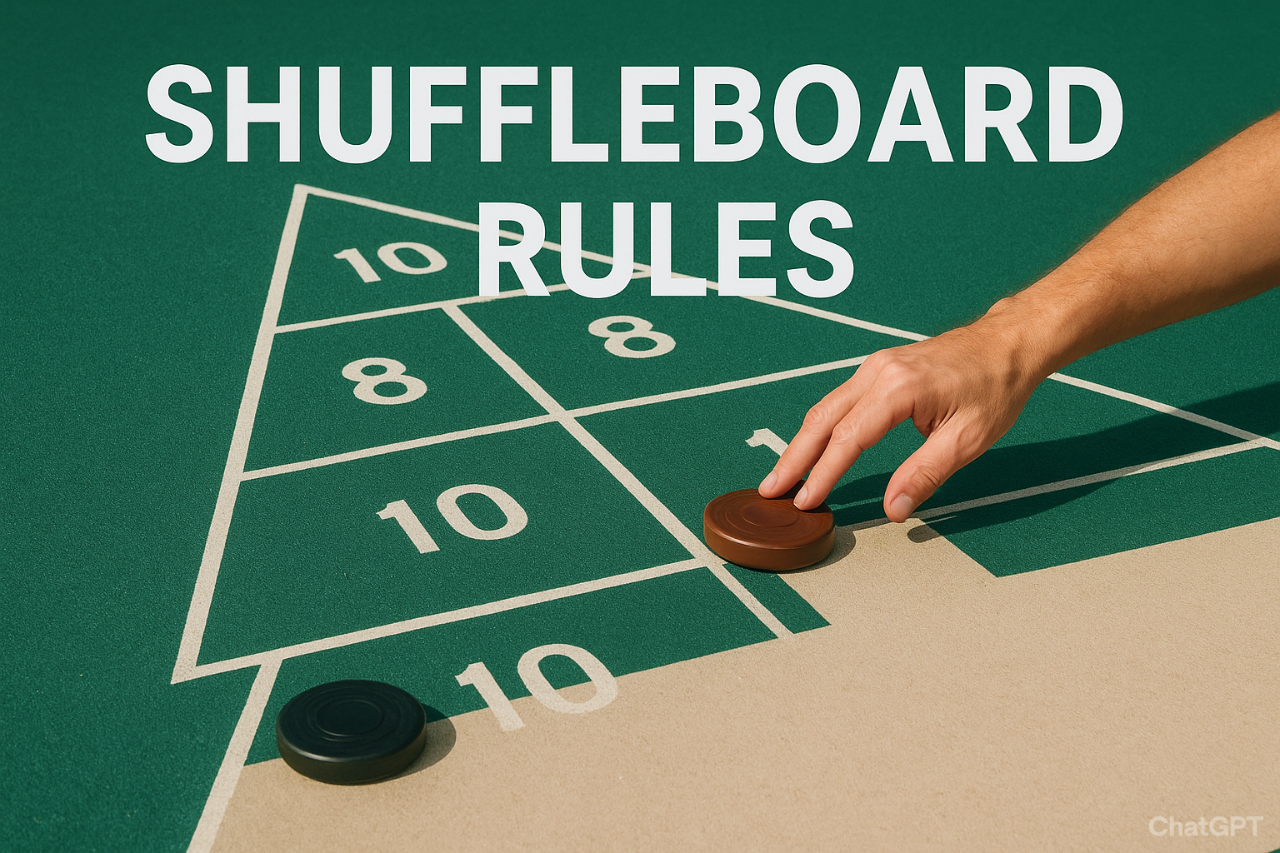Shuffleboard is a fun and competitive game that can be played indoors or outdoors. To play it well, it is essential to understand shuffleboard rules. These rules provide the foundation for fair play, scoring, and strategies. Because shuffleboard is enjoyed by both beginners and experts, learning the rules makes the game more exciting and less confusing.
At first, shuffleboard might seem simple: sliding pucks across a board or court. However, once the shuffleboard rules are explored in detail, players discover that there is much more strategy involved. By mastering these rules, anyone can enjoy the game with confidence.
Basic Equipment Needed
Before exploring shuffleboard rules, it is important to know the equipment used. There are two main versions of shuffleboard: deck shuffleboard and table shuffleboard. Each has slightly different tools.
For deck shuffleboard, players use long cues to push weighted discs across a flat court. In table shuffleboard, small pucks (often called weights) are slid down a smooth wooden table. In both versions, the goal is to reach specific scoring zones. Understanding the equipment helps players apply shuffleboard rules correctly.
Starting the Game
Like many sports, shuffleboard begins with deciding who goes first. According to shuffleboard rules, a coin toss or mutual agreement often determines this. In table shuffleboard, the first player slides a puck, followed by the opponent. In deck shuffleboard, discs are shot alternately.
The order of play is very important, as the last shot of a round can change the score. Because of this, knowing when it is your turn is one of the most critical shuffleboard rules to remember.
Objective of the Game
The main goal of shuffleboard is to slide your pucks or discs into scoring zones while knocking your opponent’s pieces out. Shuffleboard rules emphasize skill and strategy, not just luck. To win, a player or team must have the highest score at the end of the game.
This simple objective is what makes shuffleboard easy to learn yet challenging to master. Players must balance offense and defense, often making decisions that influence the final outcome.
Scoring in shuffleboard rules
Scoring is one of the most important shuffleboard rules to learn. In deck shuffleboard, the scoring zones are marked on the court, often in triangular sections labeled with values like 10, 8, and 7. Players aim to land their discs completely within these areas.
In table shuffleboard, the scoring zones are at the far end of the table, marked as 1, 2, 3, or sometimes 4 points. A puck must cross the line fully without hanging over the edge. If it falls off, no points are earned. The player with the highest points after all rounds wins the game.
Key Shuffleboard Terms
Understanding shuffleboard rules is easier once you know the vocabulary. Here are a few important terms:
Hammer: The final shot in a round, considered a big advantage.
Knock-off: A move where a player tries to remove an opponent’s puck.
Kitchen: A penalty zone where discs lose points if pushed there.
Lagging: Sliding a puck to determine order of play.
These terms help players follow shuffleboard rules more effectively during games.
Strategy in shuffleboard rules
Although shuffleboard seems simple, strategy plays a huge role. Following shuffleboard rules does not just mean knowing when to shoot—it also means knowing how. For example, some players aim directly for scoring zones, while others try to block opponents.
Another important strategy is defense. Instead of scoring, players might push their opponent’s disc into a lower zone or the kitchen. This can change the outcome of the game instantly. Because of these strategies, shuffleboard remains exciting for all skill levels.
Common Fouls
Like every game, shuffleboard has fouls that players must avoid. According to shuffleboard rules, fouls include sliding a disc or puck before it is your turn, crossing the shooting line, or touching a disc already in play.
If a foul occurs, the shot is removed from the board or court, and the turn is lost. These rules ensure fairness and make the game more challenging.
Playing Singles vs. Doubles
Shuffleboard can be played as singles or doubles. Shuffleboard rules for singles mean one player competes against another. In doubles, two players work together as a team. The order of play alternates between players, which makes teamwork critical.
Because doubles games require communication and cooperation, they are often more strategic. Singles games, however, depend heavily on individual skill. Both versions use the same shuffleboard rules for scoring and gameplay.
Length of a Game
The length of a shuffleboard game depends on which version you are playing. Shuffleboard rules for table play often use a target score, such as 15 or 21 points. The first player or team to reach that number wins.
For deck shuffleboard, games may last until a certain number of rounds are completed, often 8 or 12. The player or team with the highest total score at the end is declared the winner.
Shuffleboard Etiquette
Beyond official shuffleboard rules, etiquette plays a big role in the game. Players should respect turns, avoid distracting opponents, and keep the court or table clean. Politeness and fairness make the game enjoyable for everyone.
Although etiquette is not always written down as part of shuffleboard rules, it remains essential. Following it ensures a friendly, competitive, and positive atmosphere.
Variations of shuffleboard rules
Different regions and organizations sometimes create variations of shuffleboard rules. For example, some leagues add extra scoring zones or change the target score. Others may include additional penalties or time limits.
Despite these differences, the core idea remains the same: slide discs or pucks into scoring zones to earn points while blocking or knocking away opponents.
Benefits of Playing Shuffleboard
Shuffleboard offers many benefits, making it popular among people of all ages. First, it improves hand-eye coordination. Second, it encourages strategic thinking. Finally, shuffleboard rules are simple enough for beginners but still challenging for advanced players.
Additionally, shuffleboard is a social game. Whether played in a community center, cruise ship, or bar, it brings people together. This makes it not only a sport but also a fun activity for building friendships.
Tips for Beginners
For beginners learning shuffleboard rules, a few tips can be very helpful:
Start with smooth, controlled shots instead of fast ones.
Practice aiming for specific zones.
Watch experienced players to learn strategies.
Stay patient—accuracy improves with time.
By following these tips, anyone can become skilled at shuffleboard quickly.
Advanced Techniques
Once the basics are mastered, players can explore advanced shuffleboard techniques. According to shuffleboard rules, advanced moves include bank shots, precise knock-offs, and setting up blocks.
These techniques require practice and patience, but they can give players a major advantage. As players improve, they begin to combine offense and defense in creative ways.
The Future of Shuffleboard
Shuffleboard has grown in popularity worldwide, and its future looks bright. With modern clubs, leagues, and even international competitions, shuffleboard rules are being taught to more people every year.
Technology has also influenced the game, with digital scoring systems and online communities keeping players connected. Because of this, shuffleboard will likely remain a beloved pastime for generations.
Conclusion
In conclusion, shuffleboard rules are simple yet full of strategy. By learning the basics of equipment, scoring, fouls, and strategy, players can enjoy the game to its fullest. Whether playing for fun or in a league, shuffleboard brings people together in friendly competition.
With its long history and modern popularity, shuffleboard continues to inspire both casual players and serious competitors. Mastering shuffleboard rules is the first step toward enjoying this timeless game.

